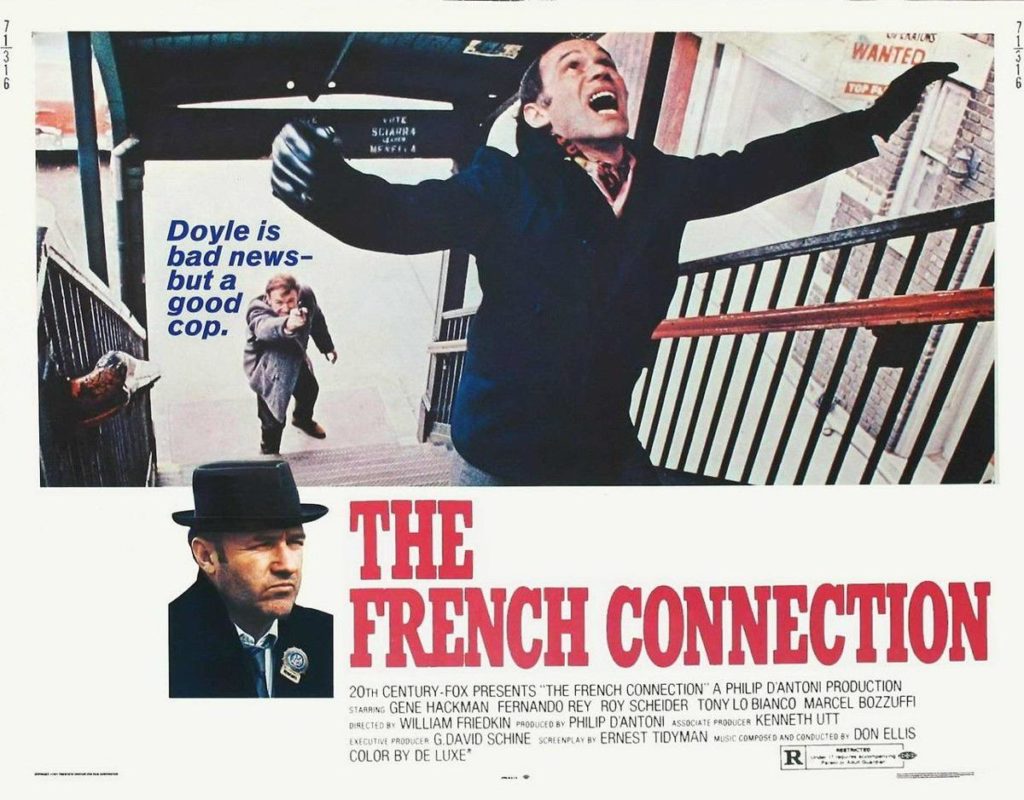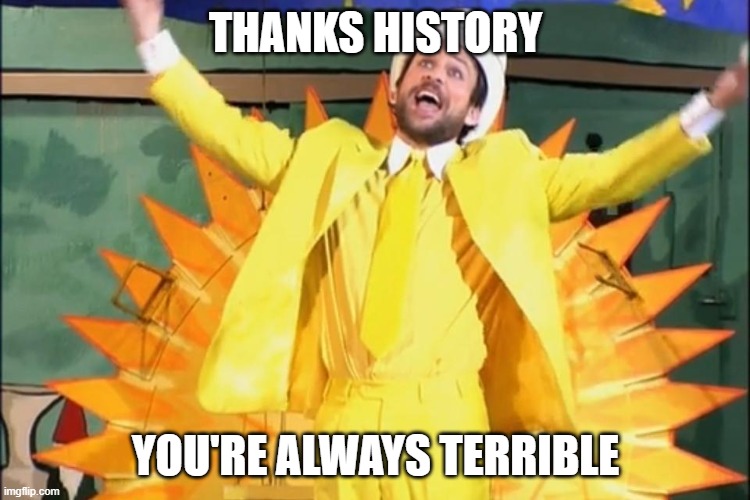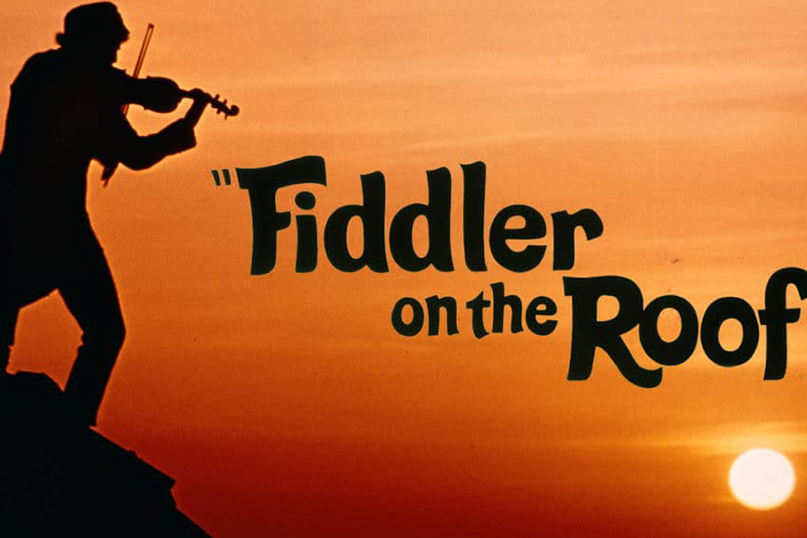1971
Cops and crooks vs. an attempt to keep the movie musical alive! All while a cinematic cultural revolution is happening in the background! Let’s start with…
And The Oscar Goes To…
…Do I have this backwards? Is this the box off– no? Okay. Just… just checking.
So what we have here is, at heart, a fairly by-the-numbers police action drama, in which a cop on the edge plays a little fast and loose with the rules in an attempt to make a large drug bust, with the twist that it’s very, very loosely based on actual events, chronicled in the non-fiction book of the same name. For obvious reasons, the main characters of the movie are fictionalized versions of the people discussed in the book.
The titular “French connection” is French drug smuggler Alain Charnier, who recruits a French TV star to smuggle cocaine into New York hidden in a car. Vice detectives Jimmy “Popeye” Doyle (Gene Hackman) and Buddy “Cloudy” Russo… wait, his name is “Buddy” and he still needs a nickname?… happened to be tailing and wiretapping Charnier’s connection in New York, and from there it’s a game of cat and mouse between the elusive Charnier and the unrelenting Doyle.
The signature scene is a frantic chase sequence in which Charnier’s chief assassin takes a shot at Doyle, misses, and makes it onto the subway while Doyle pursues from the street, ending in that shot on the poster. Yes, Doyle shot him in the back, but it’s worth noting that the guy he’s shooting killed three people and crashed a subway train (because hijacking the subway only gets you so far, dumbass) which no doubt injured or killed more while trying to kill/escape Doyle, so maybe letting him keep running wasn’t a good plan. It’s an exciting, visceral sequence that sure, pales in comparison to a post-Rock Fast and Furious, but still works better than most Bourne movies, which also rely on car chases for 90% of their major action sequences.
Popeye is not a good cop, to be clear. He’s impulsive, reckless, unnecessarily violent with black suspects, and at best partially successful. Which is to say, probably an accurate representation of NYPD vice cops in the 70s.
I’m not going to dock Popeye points for being actively horny about women in knee-high go-go boots, he’s only human.
Anyway it’s not great that Popeye’s throwing slurs around (Charnier is called “Frog One,” that’s the more frequent but milder one), but if you can muscle past that, it’s a decent watch.
And Rotten Tomatoes Says: It’s at #24, right between the two 90s winners the Academy might have been proudest about. It’s definitely entertaining and has tight pacing, which isn’t something a lot of these movies can claim. Maybe not as good as Lawrence of Arabia, but certainly an easier watch.
What’s New, Hollywood? There actually is a development in American cinema that I think The French Connection exemplifies for us: the transition from westerns to cop flicks. After Sergio Leone revitalized the western in the 60s, it seems that conservative America wanted to see their tough guys in contemporary urban environments, and the cowboy became the cop on the edge. Which allowed cop movies to get much grimmer, grittier, and dirtier (proudly Dirty in one case) than Dragnet had made them seem on TV. I’m not saying Paint Your Wagon helped drive the Tough Guys from the west to urban streets, I have no data to support that… but…
…it couldn’t have helped the western.
The Box Office Champ
…Okay I’ll ask again. Are we sure these aren’t mixed up. No? Definitely this? By 14 million dollars. Okay. Well. Maybe it’s time for an overdue look at how Old Hollywood released musicals, and hopefully touch on why I (and others) said the Hollywood musical was killed by Hello Dolly, yet here’s one ruling the box office two years later. (Thanks to Lindsay Ellis for teaching me about this through her videos.)
So a lot of Hollywood musicals, and their longer epics, relied on the roadshow release strategy, in which before wide release, big movies would play limited runs in major cities, and were treated like live theatrical shows. No trailers, cartoons, or newsreels, but an overture, intermission, entr’acte, even sometimes exit music: all of those things I’ve been complaining about the longer movies having. Also souvenir programs, merch, and premium ticket prices, all of which boosted studio revenue and made the movie feel like an event. It wasn’t limited to musicals; Wings, Cavalcade, Gone With the Wind, Ten Commandments, Cinerama goddamn Holiday, even Patton, these are just a small number of the movies we’ve discussed that got the roadshow treatment. Anything with an intermission or overture. But musicals certainly got it more often.
In the 50s, the roadshow was seen as a way to keep film competitive with television, and studios started to lean on it more… and then after the three-film combo of smash hits Mary Poppins, My Fair Lady, and The Sound of Music, they got way too excited and did what studios do: flooded the market while cranking up prices until the model became unsustainable. A series of flop musicals ending with Hello Dolly finally taught Hollywood the lesson that had been clear for a while: roadshow releases were no longer a ticket to high profits. Most were losing money, with Doctor Doolittle even losing such a pile of money on merchandise that 20th Century Fox decided movie merch wasn’t worth it anymore, make a note of that, it’ll be important later. Nothing in Hollywood stops on a dime, so there were still seven major roadshow releases in 1970, but only three made the top ten at the year’s box office, and none came within $20 million of Love Story. Most made under half what Love Story hauled in. So it was clear that the well was running dry.
Which brings us to Fiddler on the Roof, a movie musical with a roadshow release. But Dan, you might ask, didn’t you say Hello Dolly killed the movie muscial? Well, it basically did, because when we say a genre “died,” what we mean is “studios were forced to slow down, reconsider, maybe recontextualize it.” For instance, we say Batman and Robin “killed” the comic book genre, but what we mean is “Warner Bros. gave it a rest, and other studios said ‘maybe we should be looking at contemporary comic stories instead of stuff from the 30s,'” because three years after Batman and Robin “killed” the genre with its 60s-style camp, along came X-Men, quickly followed by Spider-Man, and superheroes were back in.
And no genre ever dies forever, not as long as 40-60 something executives exist to say “Hey you know what we loved when I was a kid…”
What happened with Fiddler on the Roof is that the studio looked at the failures of Camelot, Doctor Doolittle, and Hello Dolly and said “Okay if we’re gonna do this, we need to spend much less money.” It would be neat if they said “And find something more contemporary” and maybe a 1964 musical counts as “more contemporary” but I wouldn’t swear to that. It does feel less embarrassingly outdated than Lerner and Lowe’s Camelot or Gigi, I’ll give it that.
But Fiddler surely is more economical. The sets are simpler, there are no big stars (Barbra Streisand’s salary was 10% of Hello Dolly’s original budget and she was woefully miscast), even the two big dance numbers seem an order of magnitude smaller and simpler than “Consider Yourself” from Oliver! Yes Fiddler made Mary Poppins money but it was braced to make less.
And it didn’t re-ignite interest in roadshows or musicals. The other major musicals of the 70s, Cabaret, Hair, and The Rocky Horror Picture Show were much more counter-cultural (“No shit,” you say, looking at Rocky Horror) and shunned the roadshow strategy.
As to Fiddler itself, it’s fine. The largely unknown cast do well, especially the mononymed Topol as the patriarch of our central family. The main theme works very well: a community so caught up in defending its traditions against threats from within, such as young people picking their own spouses instead of letting their parents and a matchmaker do it for them, that they entirely miss the threats from without, such as the Tsar of Russia deciding to start running the Jews out of his country.
And a few of the songs are still good, even if someone gave up on writing lyrics for “If I Were Rich Man” halfway through. Not the best musical I’ve seen so far, not the worst… but the last we’ll be covering for a while.
And Rotten Tomatoes Says: 83% from critics, 92% from audiences, I could see that. It’s a bit long in the tooth but it’s mostly pleasant and I like the subtle “adapt or perish” message. it certainly proves “ignore the outside world, just focus on tradition” doesn’t work.
What’s New, Hollywood? This was less about doing something new than trying to keep something old viable, and it did not.
Other Events in Film
Before we get into a general list, attention must be paid to the birth of a genre. The highest grossing independent film of the year was a passion project starring, co-produced, written, directed, edited, and scored by Melvin Van Peebles by the name of Sweet Sweetback’s Baadasssss Song. Also finding cult success thanks to black audiences? As the Oscar-winning theme song says… the black private dick who’s a sex machine to all the chicks, Shaft. Damn right. Studios began to notice that the African-American market might be more lucrative than they thought, and the blaxploitation genre began.
- This Year in Bond: After George Lazenby decided the role wasn’t his thing, Albert Broccoli managed to lure Sean Connery back for one more go as Bond in Diamonds Are Forever, featuring what might be the dumbest, slapstickiest car chase in any major action franchise.
- Nothing demonstrates the shift of action stars from westerns to cops like Clint Eastwood ditching the Man With No Name to chase a somewhat effeminate serial killer through San Francisco in Dirty Harry.
- The Big Boss introduces the world to the martial arts wizardry of Bruce Lee.
- Stanley Kubrick releases A Clockwork Orange. We can talk about the artistry of the filmmaking easily enough, but if it’s someone’s “favourite movie,” that’s a red flag.
- Community taboos about sex went head-to-head with Hollywood over the release of Carnal Knowledge.
- George Lucas’s first directorial feature, THX 1138, comes out, suggesting maybe this crazy kid has a future in sci-fi.
- Also making his directorial debut? Steven Spielberg with Duel. Don’t think that one even needs foreshadowing.
- James Caan and Billy Dee Williams introduce Boomer men to Feelings with Brian’s Song.
- Toronto opens the first permanent IMAX theatre. Roadshows were gradually dying out, but a new gimmick was taking their place.
- Gene Wilder puts a whimsical face on attempted child murder in the beloved early slasher flick Willy Wonka and the Chocolate Factory.
- Monty Python’s Flying Circus jumps from TV to the movies with a greatest-hits sketch compilation, And Now For Something Completely Different.
- Disney blends live action and animation again with Bedknobs and Broomsticks.
- Harold and Maude didn’t shatter any records or break any new ground but it’s a little delightful and you should know about it.
- Video essayist Maggie Mae Fish would like you to know about Punishment Park.
Next Page: An entry you can’t refuse



